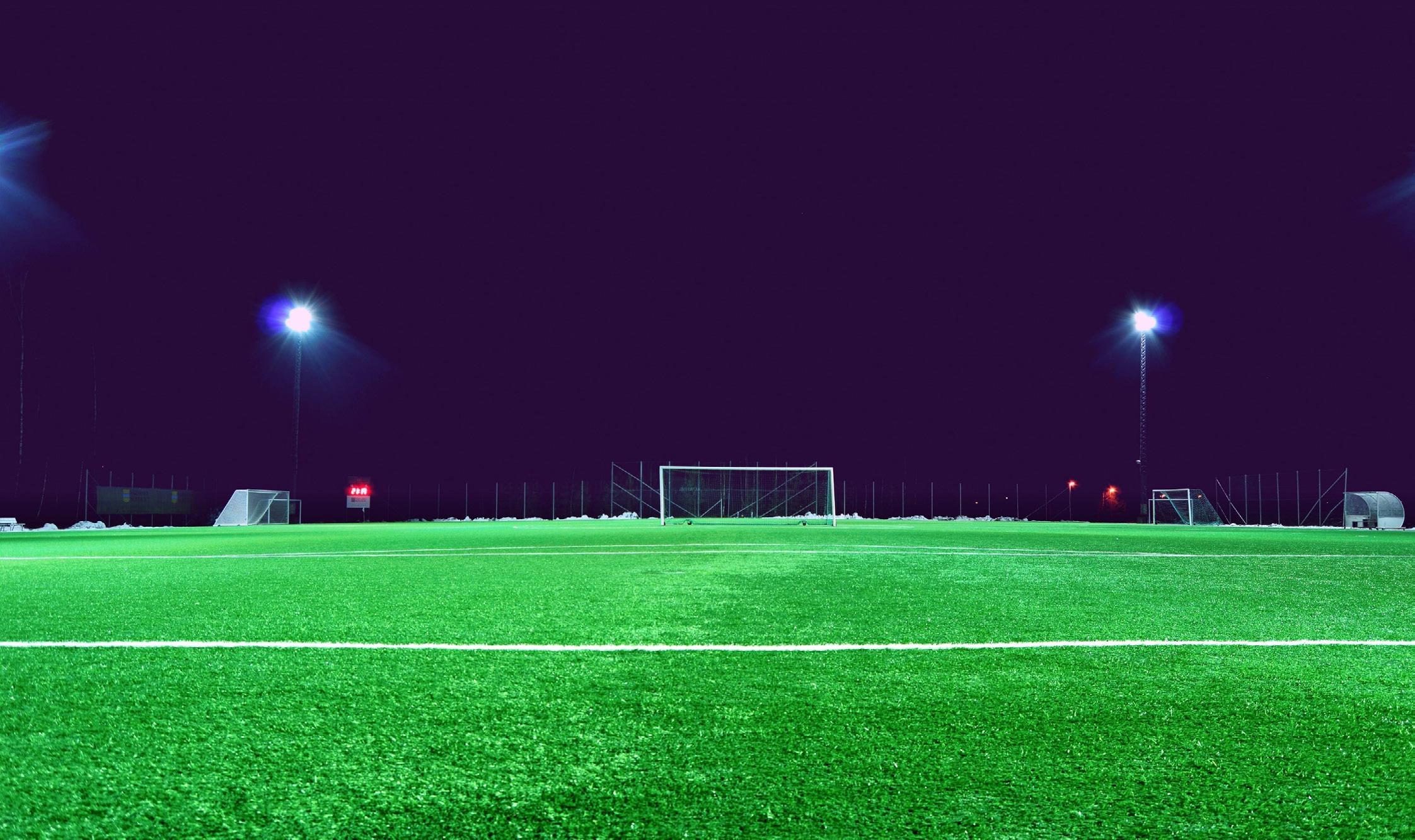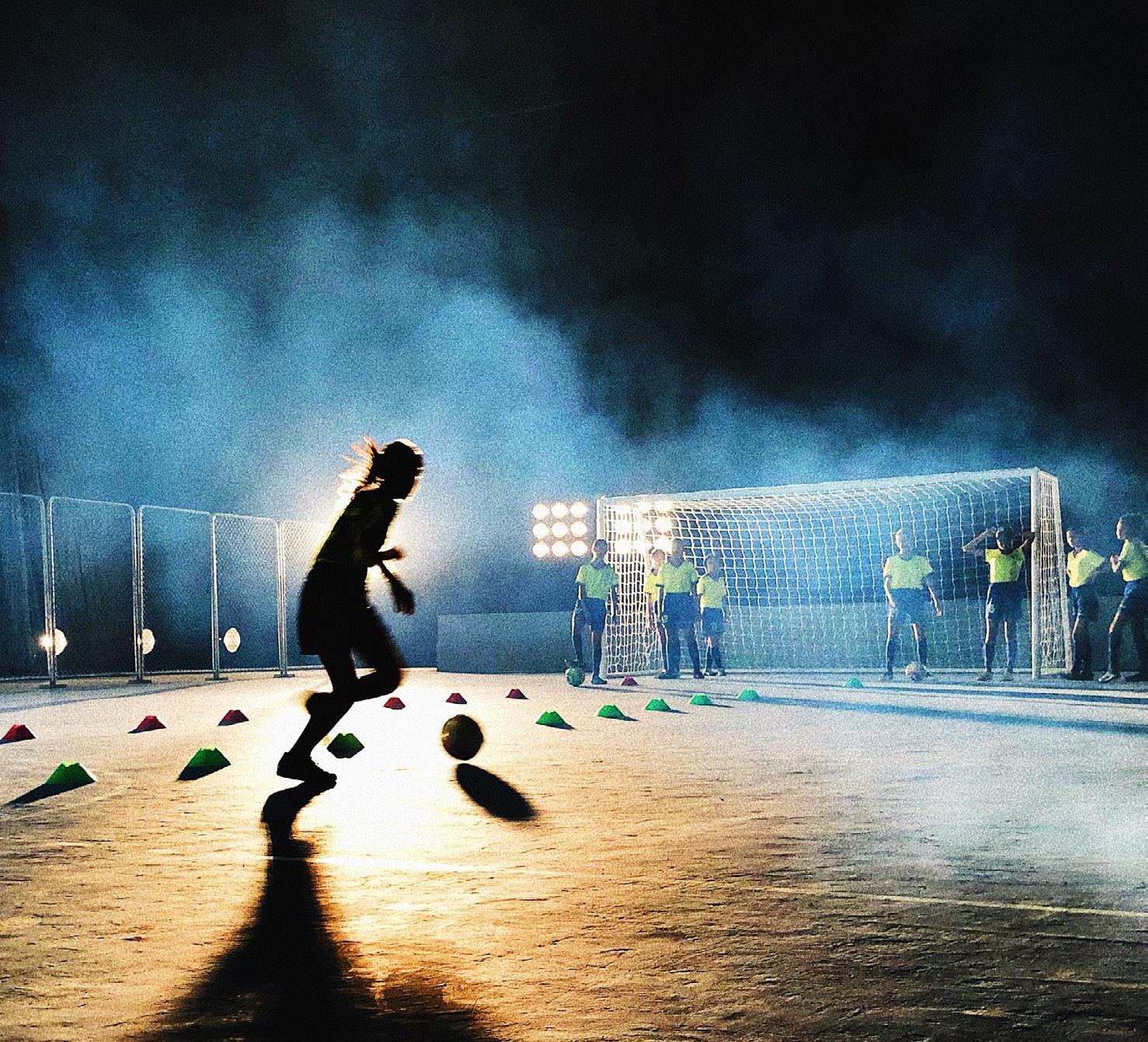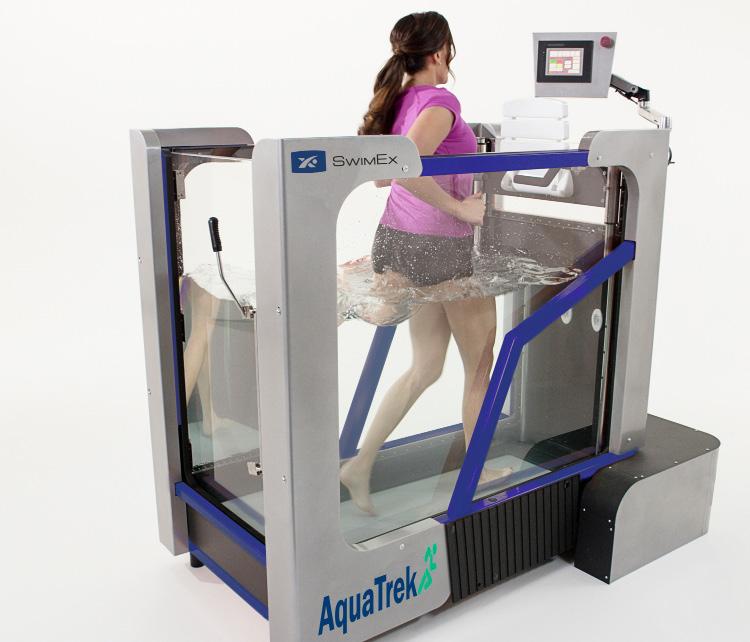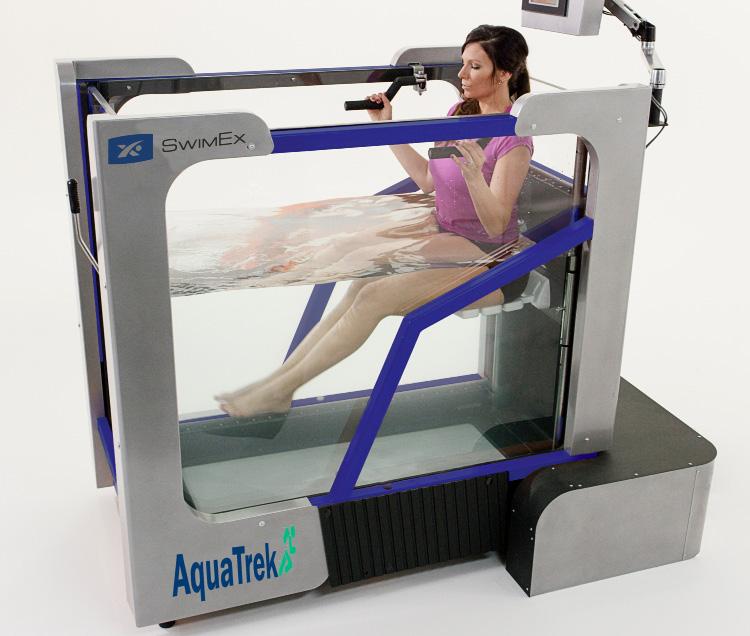
15 minute read
Does Load Management Using the Acute: Chronic Workload Ratio Prevent Health Problems?
DOES LOAD MANAGEMENT USING THE ACUTE:
CHRONIC WORKLOAD RATIO PREVENT HEALTH PROBLEMS?
Advertisement
FEATURE / TORSTEIN DALEN-LORENTSEN
Background
Health problems are common among elite youth footballers, who experience similar injury and illness patterns and burden as senior professional players.1-3 Previous studies in elite youth football have found that at any given time of the season, the prevalence of health problems is over 40%.3 Loss of participation due to health problems can negatively affect the players’ performance,4 their health later in their career,5 6 and ultimately, their long-term development.7 Therefore, to enhance the players’ health and to develop better football players, preventive measures are important.
Recently, researchers and practitioners have increased their interest in training load as a risk factor for health problems in football,8 with numerous studies reporting an association between training load and injury.9-12 Consequently, training load monitoring and management has gained widespread popularity as a preventive measure in professional and elite youth football.8 13 There is currently no consensus on which training load parameters should be monitored, how their cut off values should be set and how load progression should be evaluated. Moreover, load management is performed in numerous ways, is often dictated by the philosophy of the club staff or manager, and has no consensus scientifically.8 13 In 2014, Hulin et al. proposed the concept of the Acute:Chronic Workload Ratio (ACWR), whereby an athlete’s recent training load (acute workload) is divided by their training load over a longer period of time (chronic workload).14 This metric is suggested to aid practitioners in managing training load within certain ranges.15 16 The initial concept was based on avoiding sudden spikes in training load, trying to keep ACWR within an arbitrary “optimal range” of 0.8 to 1.5.15 16 Observational evidence supporting an association between ACWR and injury is inconsistent and controversial,17-20 and there are no experimental studies to determine whether using ACWR to manage training loads actually prevents injury or illness. Therefore, we aimed to assess the effectiveness of an ACWR-based load management intervention on health problem risk among elite youth footballers of both sexes.
Study design
We group randomised 34 teams from the elite U19- boys and girls divisions into either the control group or the intervention group. The intervention consisted of individualised load management of every player in the intervention group. Intervention groupcoaches planned the weekly training plan (micro-cycle) based on each player’s training load history. A commercially-available athlete monitoring system (AMS; Athlete Monitoring, Fitstats Inc., New Brunswick, Canada) assisted coaches in planning player micro-cycles, based on ACWR theory.14 ACWR was calculated as the coupled 7- to 28-day ratio using a rolling average. We instructed the intervention group-coaches on training load management theory and how to use the AMS to plan training content, duration and intensity. Each coach received a one-hour introductory session and a follow-up session two weeks later if necessary. Coaches were instructed to
follow a periodization model based on the “optimal range” concept described by Hulin et al.,14 21 where the aim was to progress or maintain player load while ensuring they remained within the desired ACWR range of 0.8 to 1.5. All training load data (session RPE) reported by the players were instantly available on the coach dashboard in the AMS (Figure 1). The AMS combined the subsequent week’s (7-days) planned training load with the training load from the past 21-days (a rolling average of 28-days) and calculated the planned ACWR for the subsequent week. If the planned training activity in the subsequent week led to players having an ACWR below 0.8, the AMS alerted the coach with a suggestion to increase the load accordingly. Conversely, if the planned activity led to an ACWR above 1.5 for, the AMS alerted the coach (Figure 2), and suggested that they decrease the planned load. Teams in the control group trained as before.
We used the OSTRC-H2 questionnaire 22 to record health data. Players responded to the questionnaire in the last week of each month and were instructed to report health problems for the previous 7-days only, giving us a weekly prevalence of 10 intervals at approximately 1-month apart. The primary effect measure was the between-group difference in prevalence (intervention – control). The secondary effect measure was relative risk ratio (intervention/control). To evaluate the effectiveness of the intervention, we fitted generalized estimating equations (GEE) panel-data models to the two outcomes: all health problems and substantial health problems. The models were defined with a binomial family, a log-link function, and an exchangeable correlation matrix. The estimated standard errors were adjusted for clustering, and a Kauermann and Carroll biascorrected variance estimator,23 which is specifically recommended for cluster randomized trials, was used.
Results
We did not observe any betweengroup difference of the likelihood of health problems (Relative Risk, RR 1.01 [95% CI 0.91 to 1.12]; P=0.84) or substantial health problems ((RR 0.88 [0.72 to 1.06]; P=0.17)
The study includes 2 475 health problems questionnaires. The compliance to the OSTRC-H2 questionnaire was 62% (range 10 to 100%) in the intervention group, and 76% (range 10 to 100%) in the control group, which amounts to an average of 69%. The intervention group coaches planned a total of 25 004 player sessions and received 15 253 player responses, which amounts to an overall response of 74% (range 0% to 100.0%) to the post-training questionnaire. In a post-study survey, the intervention groupcoaches replied to the following question describing their compliance with the intervention: Did you use the AMS to plan training every week throughout the season? Eight out of eleven coaches responded and five replied “yes, every week”, two replied “no, every other week” and one, “no, every month”.
Discussion
When planning this study, choosing the exact mode of intervention represented a major challenge. We were guided by the literature at the time, as well as the recommendations from the group that developed the ACWR approach.14 16 24 Also, we considered what was commonly used in the field, and therefore had the most practical relevance.


Figure 1 - Coaches dashboard in the AMS after next weeks training load is planned
Figure 2 - Coaches dashboard in ASM suggesting a revision of planned load
Since then, there has been increased scrutiny of the ACWR concept, with several papers highlighting methodological challenges,20 25-30 and some authors questioning the validity of the entire concept.17-19 Despite many studies showing an association, no study has yet managed to predict health problems based on ACWR,10 indicating that a meaningful and pronounced relationship between ACWR and health problems is unlikely.
We tested the preventive effect on health problems by using one particular approach to load management. However, there is no consensus on which load management concept should be used, or, if using ACWR, how it should be calculated.20 Our intervention was a one-size-fits-all approach, as we considered it to be the most feasible method for the coaches and because a structured individual protocol remains in a conceptual phase.31 Moreover, at the time we planned the study, the available literature recommended that a similar threshold should be used for all players.14 This one-size-fits-all approach has recently been challenged by both scientists and practitioners, as the relationship between ACWR and health problems is affected by a large number of individual moderating factors.31
Methodological considerations
This study involved an intervention that was arguably more technically demanding and time-consuming for coaches and players than previous prevention studies in sports.32 33 These challenges may have led to reduced adherence to the intervention by the coaches, and reduced questionnaire response rates by the players. A major limitation of the study is the method used to assess the coaches’ adherence to the intervention. Ideally, we would have logs or questionnaires describing the extent to which their training planning was influenced by the ACWR, and how often they intervened in their players’ training plan based on feedback from the AMS. However, we asked the coaches in a post-study questionnaire where they indicated that, to a large extent, the intervention had been followed.
What does this mean?
Although many practitioners, researchers, and players consider training load to be an important risk factor for health problems in football, supporting evidence is currently conflicting. Our intervention was a one-size-fits-all approach, which has recently been challenged by both scientists and practitioners, as the relationship between training load and health problems is affected by a large number of individual moderating factors.
In elite football, sports medicine and performance practitioners meticulously and continuously assess each player’s training load together with numerous other factors, such as history of previous injuries, injuries, player age, wellness, non-sporting load, communication with player, screening and strength test and the importance of next match. This is done to inform subjective decisions that aim to increase performance and reduce the risk of health problems. Providing coaches with a one-size-fitsall metric does not seem to add much value to this process. We believe that, given the results of this study and the current state of knowledge in the field, load management remains just as much an art as a science.
Key points:
• Load management using ACWR in a one-size-fits-all approach does not appear to prevent health problems among elite youth football players of both sexes.
• The lack of a clear relationship between training load and health problems does not mean practitioners should abandon training load management. Its primary role has always been performance enhancement, and not health problem prediction or prevention.
• With a lack of models linking training load and health problems, practitioners should follow the general training principles such as the principle of progressive overload.
Author Bio: Torstein Dalen-Lorentsen is a sports physiologist who currently works as a PhD-Fellow at the PhD-student at the Oslo Sports Trauma Research Center. Torstein has extensive experience working with top-level athletes within different sports such as alpine skiing, handball and football. His last role in sports was with professional football club Strømsgodset, where he had the role as a high-performance manager for three seasons. Torstein’s PhD-project is titled “Can training load management reduce injury and illness risk in elite youth football?” Where the research topics have surrounded methodological issues, effectiveness and implementation of training load management. Twitter @torsteindalen



Figure 4 - Prevalence of health problems in the control group and the intervention group throughout the season.
Figure 5 - Prevalence of health problems in the control group
1. Jones S, Almousa S, Gibb A, et al. Injury Incidence, Prevalence and Severity in High-Level Male Youth Football: A Systematic Review. Sports Medicine 2019;49(12):1879-99. doi: 10.1007/ s40279-019-01169-8 2. Ekstrand J, Hagglund M, Walden M. Injury incidence and injury patterns in professional football: the UEFA injury study. Br J Sports Med 2011;45(7):553-8. doi: 10.1136/bjsm.2009.060582 [published Online First: 2009/06/26] 3. Moseid CH, Myklebust G, Fagerland MW, et al. The prevalence and severity of health problems in youth elite sports: A 6-month prospective cohort study of 320 athletes. Scandinavian Journal of Medicine & Science in Sports 2018;28(4):1412-23. doi: 10.1111/ sms.13047 4. Røksund OD, Kristoffersen M, Bogen BE, et al. Higher Drop in Speed during a Repeated Sprint Test in Soccer Players Reporting Former Hamstring Strain Injury. Frontiers in physiology 2017;8:25-25. doi: 10.3389/fphys.2017.00025 5. Maffulli N, Longo UG, Gougoulias N, et al. Long-term health outcomes of youth sports injuries. British Journal of Sports Medicine 2010;44(1):21. doi: 10.1136/bjsm.2009.069526 6. Fyfe JJ, Opar DA, Williams MD, et al. The role of neuromuscular inhibition in hamstring strain injury recurrence. J Electromyogr Kinesiol 2013;23(3):523-30. doi: 10.1016/j. jelekin.2012.12.006 [published Online First: 2013/02/09] 7. Ward P, Hodges NJ, Starkes JL, et al. The road to excellence: deliberate practice and the development of expertise. High Ability Studies 2007;18(2):119-53. doi: 10.1080/13598130701709715 8. Akenhead R, Nassis GP. Training Load and Player Monitoring in High-Level Football: Current Practice and Perceptions. International journal of sports physiology and performance 2016;11(5):587-93. doi: 10.1123/ijspp.2015-0331 9. Delecroix B, McCall A. Workload and non-contact injury incidence in elite football players competing in European leagues. Taylor & Francis 2019 doi: 10.1080/17461391.2018.1477994 10. Fanchini M, Rampinini E, Riggio M, et al. Despite association, the acute:chronic work load ratio does not predict non-contact injury in elite footballers. Science and Medicine in Football 2018;2(2):108-14. doi: 10.1080/24733938.2018.1429014 11. Jaspers A, Kuyvenhoven JP, Staes F, et al. Examination of the external and internal load indicators’ association with overuse injuries in professional soccer players. Journal of Science and Medicine in Sport 2017:1-7. doi: 10.1016/j.jsams.2017.10.005 12. Malone S, Owen A, Newton M, et al. The acute:chonic workload ratio in relation to injury risk in professional soccer. J Sci Med Sport 2017;20(6):561-65. doi: 10.1016/j.jsams.2016.10.014 [published Online First: 2016/11/20] 13. Weston M. Training load monitoring in elite English soccer: a comparison of practices and perceptions between coaches and practitioners. Science and Medicine in Football 2018;2(3):216-24. doi: 10.1080/24733938.2018.1427883 14. Hulin BT, Gabbett TJ, Blanch P, et al. Spikes in acute workload are associated with increased injury risk in elite cricket fast bowlers. Br J Sports Med 2014;48(8):708-12. doi: 10.1136/bjsports-2013-092524 [published Online First: 2013/08/22] 15. Blanch P, Gabbett HT. Has the athlete trained enough to return to play safely? The acute:chronic workload ratio permits clinicians to quantify a player's risk of subsequent injury. British journal of sports medicine 2016;50(8):471-75. doi: 10.1136/bjsports-2015-095445 16. Gabbett HT. The training-injury prevention paradox: should athletes be training smarter and harder? British journal of sports medicine 2016;50(5):273-80. doi: 10.1136/bjsports-2015-095788 17. Impellizzeri FM, Tenan M, Kempton T, et al. Acute:Chronic Workload Ratio: Conceptual Issues and Fundamental Pitfalls. International Journal of Sports Physiology and Performance 2020:1-7. doi: 10.1123/ ijspp.2019-0864 18. Impellizzeri FM, Woodcock S, Coutts AJ, et al. Acute to random workload ratio is ‘as’ associated with injury as acute to actual chronic workload ratio: time to dismiss ACWR and its components. SportRxiv Preprints 2020 doi: 10.31236/osf.io/e8kt4 19. Impellizzeri FM, Woodcock S, McCall A, et al. The acute-chronic workload ratio-injury figure and its ‘sweet spot’ are flawed. 2019 doi: https://doi.org/10.31236/osf.io/gs8yu 20. Dalen-Lorentsen T, Andersen TE, Bjørneboe J, et al. A cherry tree ripe for picking: The relationship between the acute:chronic workload ratio and health problems. SportRxiv Preprints 2020 doi: https://doi. org/10.31236/osf.io/nhqbx 21. Hulin BT, Gabbett HT, Lawson DW, et al. The acute:chronic workload ratio predicts injury: high chronic workload may decrease injury risk in elite rugby league players. British journal of sports medicine 2016;50(4):231-36. doi: 10.1136/bjsports-2015-094817 22. Clarsen B, Ronsen O, Myklebust G, et al. The Oslo Sports Trauma Research Center questionnaire on health problems: a new approach to prospective monitoring of illness and injury in elite athletes. Br J Sports Med 2014;48(9):754-60. doi: 10.1136/bjsports-2012-092087 [published Online First: 2013/02/23] 23. Kauermann G, Carroll RJ. A Note on the Efficiency of Sandwich Covariance Matrix Estimation. Journal of the American Statistical Association 2001;96(456):1387-96. doi: 10.1198/016214501753382309 24. Soligard T, Schwellnus M, Alonso JM, et al. How much is too much? (Part 1) International Olympic Committee consensus statement on load in sport and risk of injury. Br J Sports Med 2016;50(17):1030-41. doi: 10.1136/bjsports-2016-096581 [published Online First: 2016/08/19] 25. Lolli L, Batterham AM, Hawkins R, et al. Mathematical coupling causes spurious correlation within the conventional acute-to-chronic workload ratio calculations. British Journal of Sports Medicine 2019;53(15):921. doi: 10.1136/ bjsports-2017-098110 26. Lolli L, Batterham AM, Hawkins R, et al. The acute-to-chronic workload ratio: an inaccurate scaling index for an unnecessary normalisation process? British Journal of Sports Medicine 2018:bjsports-2017-098884. doi: 10.1136/bjsports-2017-098884 27. Sampson JA, Fullagar HH, Murray A. Evidence is needed to determine if there is a better way to determine the acute:chronic workload. Br J Sports Med 2017;51(7):621-22. doi: 10.1136/ bjsports-2016-097085 [published Online First: 2016/11/18] 28. Williams S, West S, Cross MJ, et al. Better way to determine the acute:chronic workload ratio? British journal of sports medicine 2016:bjsports-2016-096589-3. doi: 10.1136/ bjsports-2016-096589 29. Andrade R, Wik EH, Rebelo-Marques A, et al. Is the Acute: Chronic Workload Ratio (ACWR) Associated with Risk of TimeLoss Injury in Professional Team Sports? A Systematic Review of Methodology, Variables and Injury Risk in Practical Situations. Sports Medicine 2020 doi: 10.1007/s40279-020-01308-6 30. Wang C, Vargas JT, Stokes T, et al. Analyzing Activity and Injury: Lessons Learned from the Acute:Chronic Workload Ratio. Sports Med 2020;50(7):1243-54. doi: 10.1007/s40279-020-01280-1 [published Online First: 2020/03/04] 31. Bittencourt NFN, Meeuwisse WH, Mendonca LD, et al. Complex systems approach for sports injuries: moving from risk factor identification to injury pattern recognitionnarrative review and new concept. Br J Sports Med 2016;50(21):1309-14. doi: 10.1136/bjsports-2015-095850 [published Online First: 2016/07/23] 32. Harøy J, Clarsen B, Wiger EG, et al. The Adductor Strengthening Programme prevents groin problems among male football players: a cluster-randomised controlled trial. British Journal of Sports Medicine 2019;53(3):150. doi: 10.1136/bjsports-2017-098937 33. Andersson SH, Bahr R, Clarsen B, et al. Preventing overuse shoulder injuries among throwing athletes: a cluster-randomised controlled trial in 660 elite handball players. British Journal of Sports Medicine 2017;51(14):1073. doi: 10.1136/bjsports-2016-096226




The New SwimEx AquaTrek construction free underwater treadmill. The ideal Solution for offering Hydrotherapy without adding a pool!
•Small footprint – minimum 150 sq ft needed •Challenge the competitive athlete •Safe and comfortable for older clientele •Inward opening door is ideal for tighter spaces •Forward or reverse treadmill direction • Two resistance jets •Reliable and quiet energy efficient pumps •Large touchscreen controls – up to 100 different types of treatment sessions •3 year Warranty – best in business
Seniors ~ Offer an effective way to fight fall prevention, a major contributor to hospital admissions. Safe place to work on gait.
Athletes ~ Continue to stay in shape with less damage on joints.
Available Features & Options
• Treadmill sizes: 55.88cm x 111.76cm or 55.88cm x 142.24cm • Treadmill speed: up to8 kph or up to 14 kph (.16 kph increments) •Run/Walk on an incline – up to 15% if desired


Dimensions
Overall Length Overall Height (from floor) Overall Width Water Depth Above Treadmill Surface Treadmill Belt Length Treadmill Belt Width Treadmill Chamber Inside Length Treadmill Chamber Inside Width Treamill Chamber Outside Width
Standard Available
200.66cm 165.1cm 132.08cm up to 111.76cm 111.76cm 55.88cm 147.32cm 81.82cm 99.06cm 251.46cm 190.5cm
up to 137.16cm 162.56cm
198.12cm
99.06cm









